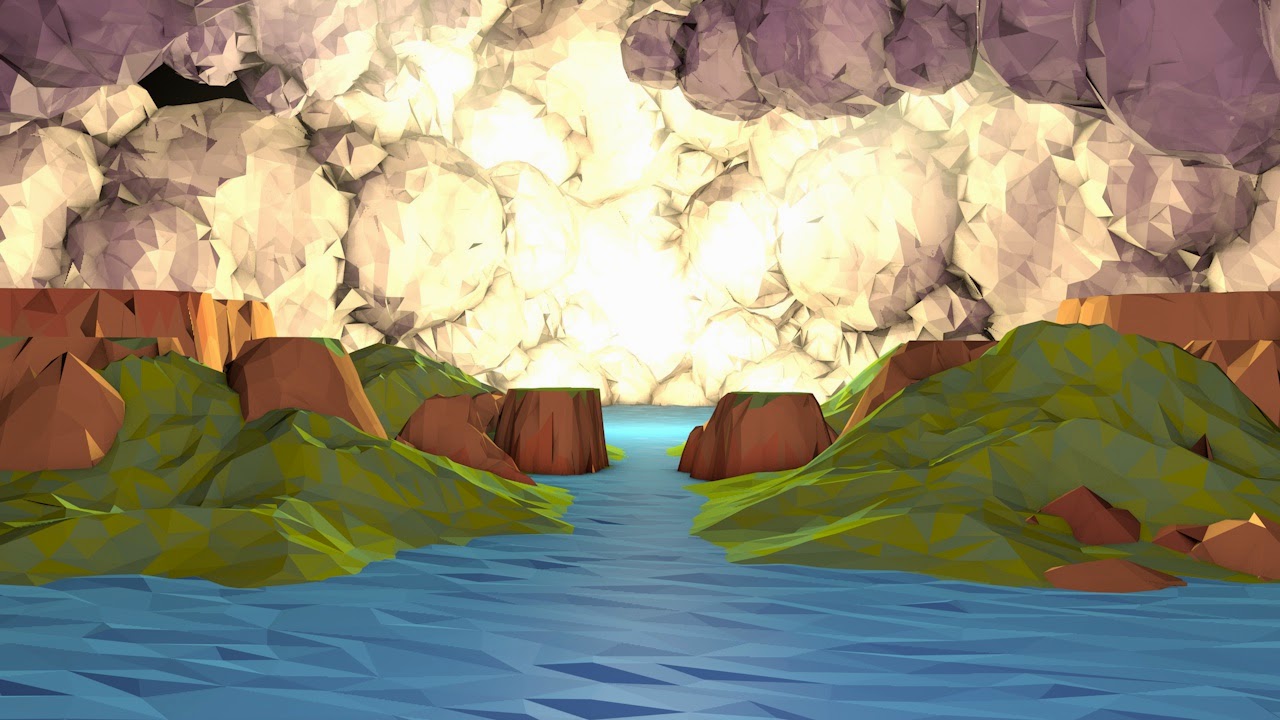There are two problems with this, the first is that the files ended up quite large and hard to manage, the second is the render times are completely ridiculous. To deal with the first problem animation files were kept seperate except for the canyon to ice cave scene which had to be part of the same animation to blend correctly. To deal with the second problem rather than rendering the animations out to AVI files they were rendered as PNG sequences, this allowed for faster render times with no consequence if the computer turned itself off or something like that, it can also useful for compositing to have stills of the first and last frame of each animation.
Because the canyon and ice cave scene were both seperate I had to merge the files, I then set up a new camera, and started re-arranging all the keyframes that were already in each scene. I then thought about the feedback I had recieved in focus groups and started creating test renders. Here is the first below.
In this render I had simply put the pieces together, and roughly created the transition between environments, the cubes were for cloud placement because at this point I hadn't merged them with that file. I also tested the changing of the background colour in order to try an change the mood of the scene but this only really became effective at changing the mood when the colour of the lights were also changed along with the sky. The shattering of the sky although it wasn't what I had originally envisioned was the best way I could think of that would also represent that world shattering after the mountain is broken. The main problem with this scene was the brightness, altough it doesn't have ambient occlusion on but the ice planet was meant to get much darker as the camera approaches.
In the above scene the main changes are the clouds were added and the lights and materials of some objects has much smoother animation that was much closer to what I had envisioned. The clouds turning dark before they explode was interesting because it was actually just the way the material was picking up the area light from the canyon but I quite liked it so left it in. The clouds are supposed to become less interesting and then dissipate so them turning a greyer darker colour does make them seem less appealing and then they explode. If I had time I would have liked to make the whole cloud scene longer maybe have the camera fly through clouds for about 20 seconds, but unfortuneately I didn't have the best time management nearing the end and was only able to render what I felt was a priority, including re-renders of all the other scenes.
Below is the final Animation although I will be working on a longer version in order to create a music video but hopefully the piece demonstrates how light, colour, movement and form all communicate emotion in experimental animation. Although the piece has undergone many changes, and the project as a whole was a fairly bumpy road, I am happy with the final piece, as stupid as it sounds I feel that it is one of the purest things I have ever created and is very close to what I had envisioned. If I had more time I would have liked to add more synaesthesic elements that would visualise the music, I would have also liked for some of the scenes longer, but as it stands I think the amount of time it takes is well suited for the degree show as people won't want to stand in the one place for five minutes watching my animation.


























